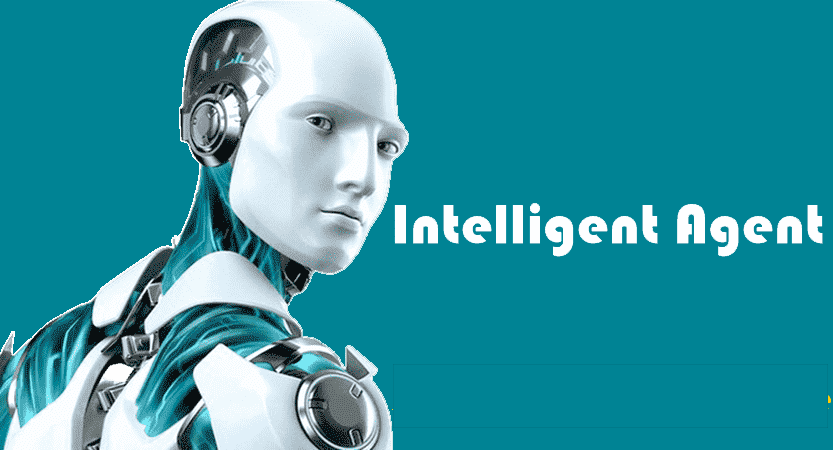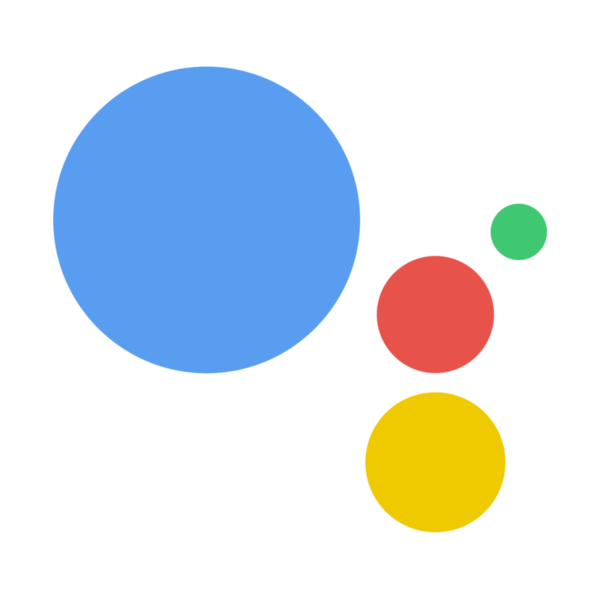Intelligent virtual assistants (IVAs), also known as virtual agents and digital employees, allow businesses’ customers or clients to engage with them in a conversational manner. Conversations conducted with these bots are human like and natural.
A key differentiator between IVAs and chatbot software is the nature of the conversation conducted. While chatbots are typically scripted and do not have the ability to understand multiple intents, IVAs understand a range of different intents from a singular utterance and can even understand responses they are not explicitly programmed to using natural language processing (NLP). With the use of machine learning and deep learning, IVAs can grow intelligently and understand a wider vocabulary and colloquial language, as well as provide more precise and correct responses to requests. In addition, IVAs are able to provide personalized answers based on segmentation or other information provided. They are often focused on a particular job role or use cases, such as marketing, customer service, and sales. This type of software has the ability to use human output as an input to update business systems such as CRM software.
Here are the top 10 intelligent virtual assistants:
1. Google Assistant:
Developed by Google, Google Assistant is a widely used virtual assistant available on various devices, including smartphones, smart speakers, and smart displays. It offers a range of features, including voice commands, smart home control, personalized recommendations, and integration with Google services.
Key features:
- Voice Commands: Google Assistant responds to voice commands, allowing users to interact with their devices hands-free. Users can ask questions, give instructions, and perform tasks simply by speaking to the assistant.
- Information and Search: Google Assistant leverages Google’s powerful search engine to provide information on a wide range of topics. Users can ask questions, get weather updates, sports scores, stock prices, news updates, and much more.
- Personalized Recommendations: Google Assistant can provide personalized recommendations based on user preferences, previous interactions, and data from Google services. It offers suggestions for restaurants, movies, music, and other activities tailored to the user’s interests.
2. Apple Siri:
Siri, synonymous with every other virtual assistant, is still one of the best virtual assistants one could ask for. Run on all common Apple devices, Siri laid the foundation of virtual assistants. The veteran app has gotten updated numerous times, improving and adding more to what it can already do. Siri can type texts for you, search your queries on search engines, dial a contact, warn about the weather, and read headlines from selected newspapers (many newspapers have audio reports now, such as The Washington Post). This smart virtual assistant can also act as an interpreter helping you understand different foreign languages.
Key features:
- Voice Commands: Siri responds to voice commands, allowing users to interact with their Apple devices using natural language. Users can ask questions, give instructions, and perform tasks hands-free by speaking to Siri.
- Information and Knowledge: Siri leverages various sources, including the web and Apple’s services, to provide information on a wide range of topics. Users can ask questions about general knowledge, sports scores, weather forecasts, calculations, conversions, and more.
- Personal Assistant Capabilities: Siri functions as a personal assistant, helping users manage their daily tasks and routines. Users can set reminders, create calendar events, schedule appointments, and receive notifications for upcoming events or tasks.
3. Amazon Alexa:
Developed by Amazon, Alexa is a popular virtual assistant found in devices like Amazon Echo speakers, Fire tablets, and other smart devices. Alexa can answer questions, play music, control smart home devices, provide news updates, and integrate with numerous third-party services and skills.
Key features:
- Voice Commands: Alexa responds to voice commands, allowing users to interact with their devices hands-free. Users can ask questions, give instructions, and perform tasks simply by speaking to Alexa.
- Information and Knowledge: Alexa leverages various sources, including the web and Amazon’s services, to provide information on a wide range of topics. Users can ask questions about general knowledge, news, weather, sports scores, and more.
- Smart Home Control: Alexa integrates with a wide range of smart home devices and platforms, allowing users to control their connected devices using voice commands. Users can control lights, thermostats, locks, cameras, and other compatible smart devices.
4. Microsoft Cortana:
Cortana is Microsoft’s virtual assistant available on Windows devices, Xbox consoles, and the Cortana mobile app. It offers voice-based assistance, reminders, calendar management, web search capabilities, and integration with Microsoft services.
Key features:
- Voice Commands: Cortana responds to voice commands, allowing users to interact with their Windows devices hands-free. Users can ask questions, give instructions, and perform tasks simply by speaking to Cortana.
- Personal Assistant Capabilities: Cortana functions as a personal assistant, helping users manage their tasks, schedule, and reminders. Users can set reminders, create calendar events, schedule appointments, and receive notifications for upcoming events or tasks.
- Information and Knowledge: Cortana leverages Bing, Microsoft’s search engine, to provide information on a wide range of topics. Users can ask questions, get weather updates, sports scores, news updates, calculations, conversions, and more.
5. Samsung Bixby:
Bixby is Samsung’s virtual assistant found on its smartphones, smart TVs, and smart home appliances. Bixby allows users to control their Samsung devices, perform tasks, search for information, and interact through voice commands and a visual interface.
Key features:
- Voice Commands: Bixby responds to voice commands, allowing users to interact with their Samsung devices hands-free. Users can ask questions, give instructions, and perform tasks simply by speaking to Bixby.
- Personal Assistant Capabilities: Bixby functions as a personal assistant, helping users manage their tasks, reminders, and schedules. Users can set reminders, create calendar events, and receive notifications for upcoming events or tasks.
- Bixby Vision: Bixby Vision integrates with the device’s camera to provide augmented reality (AR) features. Users can point the camera at objects, landmarks, or products to get information, translation, or shopping recommendations.
6. IBM Watson Assistant:
IBM Watson Assistant is an enterprise-level virtual assistant designed to provide AI-powered customer support and personalized interactions. It can understand natural language queries, provide detailed responses, and integrate with business systems to deliver tailored solutions.
Key features:
- Natural Language Processing: Watson Assistant uses advanced natural language processing (NLP) capabilities to understand and interpret user input in a conversational manner. It can process and analyze user queries, intents, and entities to provide accurate responses.
- Multilingual Support: Watson Assistant supports multiple languages, allowing users to interact with the assistant in their preferred language. It can understand and respond to queries in different languages, providing a localized experience.
- Contextual Understanding: Watson Assistant has contextual understanding, enabling it to maintain context during a conversation. It can remember user inputs and previous interactions to provide relevant responses and follow-up questions.
7. Nuance Dragon Assistant:
Dragon Assistant by Nuance Communications is a virtual assistant primarily focused on voice recognition and dictation. It is used in various applications, including dictation software, customer support systems, and in-car voice control.
Key features:
- Voice Commands: Dragon Assistant responds to voice commands, allowing users to interact with their devices hands-free. Users can ask questions, give instructions, and perform tasks simply by speaking to Dragon Assistant.
- Natural Language Understanding: Dragon Assistant utilizes advanced natural language understanding (NLU) capabilities to accurately interpret and understand user input. It can comprehend complex queries and contextually respond to user requests.
- Personal Assistant Capabilities: Dragon Assistant functions as a personal assistant, helping users manage their tasks, schedules, and reminders. Users can set reminders, create calendar events, and receive notifications for upcoming events or tasks.
8. OpenAI ChatGPT:
ChatGPT, developed by OpenAI, is a language model that can be used as a conversational agent. It can engage in text-based conversations, answer questions, provide explanations, and generate human-like responses across various domains.
Key features:
- Natural Language Understanding: ChatGPT utilizes advanced natural language processing techniques to understand and interpret user input. It can comprehend context, intents, and entities in the conversation to generate relevant and meaningful responses.
- Contextual Conversation: ChatGPT maintains context during a conversation, allowing for more coherent and contextually appropriate responses. It can refer back to previous messages or information shared in the conversation to provide relevant and continuous interactions.
- Knowledge and Information Retrieval: ChatGPT has access to a vast amount of information from a wide range of sources. It can retrieve information on various topics, answer factual questions, provide definitions, and offer insights based on its training data.
9. Alibaba AliGenie:
AliGenie is the virtual assistant developed by Alibaba Group for its smart devices and services. It supports voice commands, smart home control, shopping assistance, and integration with Alibaba’s e-commerce platform.
Key features:
- Voice Commands: AliGenie responds to voice commands, allowing users to interact with their Alibaba-powered devices and services hands-free. Users can ask questions, give instructions, and perform tasks simply by speaking to AliGenie.
- Smart Home Control: AliGenie integrates with Alibaba’s smart home ecosystem, enabling users to control compatible smart devices using voice commands. Users can control lights, thermostats, appliances, and other connected devices.
- E-commerce Integration: AliGenie is tightly integrated with Alibaba’s e-commerce platforms, such as Tmall and Taobao. Users can search for products, place orders, track shipments, and receive personalized recommendations using voice commands.
10. LG ThinQ AI:
ThinQ AI is LG’s virtual assistant integrated into its smart home appliances, TVs, and other devices. It offers voice control, and smart home management, and interacts with LG’s ecosystem of products.
Key features:
- Voice Commands: ThinQ AI responds to voice commands, allowing users to interact with their LG devices hands-free. Users can control various functions and operations by speaking to ThinQ AI.
- Smart Home Integration: ThinQ AI integrates with LG’s smart home ecosystem, enabling users to control compatible smart devices using voice commands. Users can manage lights, thermostats, air conditioners, refrigerators, and other connected appliances.
- Natural Language Processing: ThinQ AI incorporates natural language processing (NLP) capabilities, allowing it to understand and interpret user input in a conversational manner. Users can speak naturally and ask questions or give instructions to ThinQ AI.



